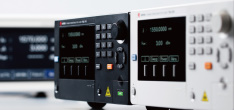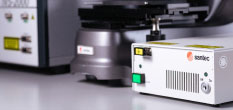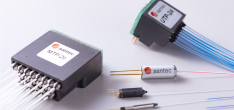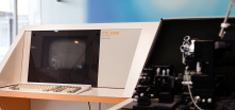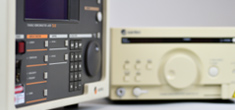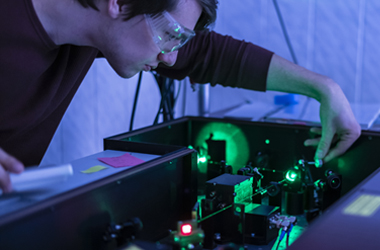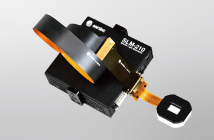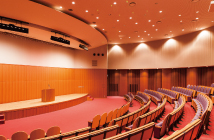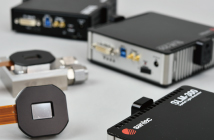Outstanding Performance
What is a Spatial Light Modulator?
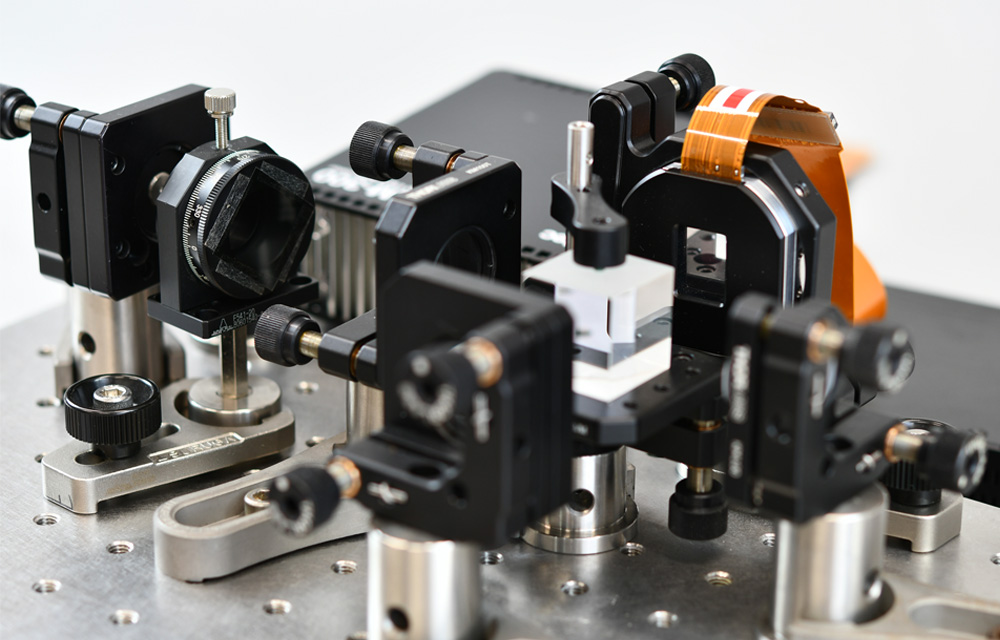
A Spatial Light Modulator (SLM) is an optical device that electrically controls the spatial distribution of light's amplitude, phase, or polarization. It plays a crucial role in modern optical systems and is widely used in cutting-edge applications such as holography, laser beam shaping, and optical communication.
How Does a Spatial Light Modulator Work?
This method controls the orientation of liquid crystal molecules using an electric field, thereby modulating light amplitude, phase, and polarization. There are two types: phase-modulating SLMs that control the wavefront (phase) of light and amplitude-modulating SLMs that control light intensity.
This type uses an array of microscopic mirrors to reflect light, enabling high-speed modulation of light intensity.
This type utilizes an array of microscopic mirrors to reflect light, enabling high-speed modulation of light intensity
This method employs optical waveguides and utilizes electro-optic or thermo-optic effects to modulate light.
This type utilizes changes in refractive index caused by acoustic waves (acousto-optic effect) to modulate light.
This method utilizes the magneto-optic effect (Faraday effect) to modify light polarization.
LCOS-Based Spatial Light Modulator (LCOS-SLM)
LCOS-SLM is a type of liquid crystal spatial light modulator (LC-SLM) that utilizes a reflective liquid crystal display panel (LCOS: Liquid Crystal on Silicon), where a liquid crystal layer is sealed between a silicon backplane and a glass substrate with a transparent electrode. When voltage is applied to millions of electrodes (pixels) formed on the silicon backplane, the liquid crystal molecules rotate due to the electric field, changing the refractive index of the liquid crystal layer and thereby modulating the phase of the reflected light.
Since different voltages can be applied to each pixel, LCOS allows for precise, two-dimensional control of light phase. This technology excels in applications requiring high-precision optical control, such as holography and wavefront compensation optics. Our LCOS-SLM features over two million electrodes and achieves higher resolution than other spatial light modulation methods. Additionally, it offers a high phase resolution of 10-bit (1024 levels) and outstanding phase stability of less than 0.003π.
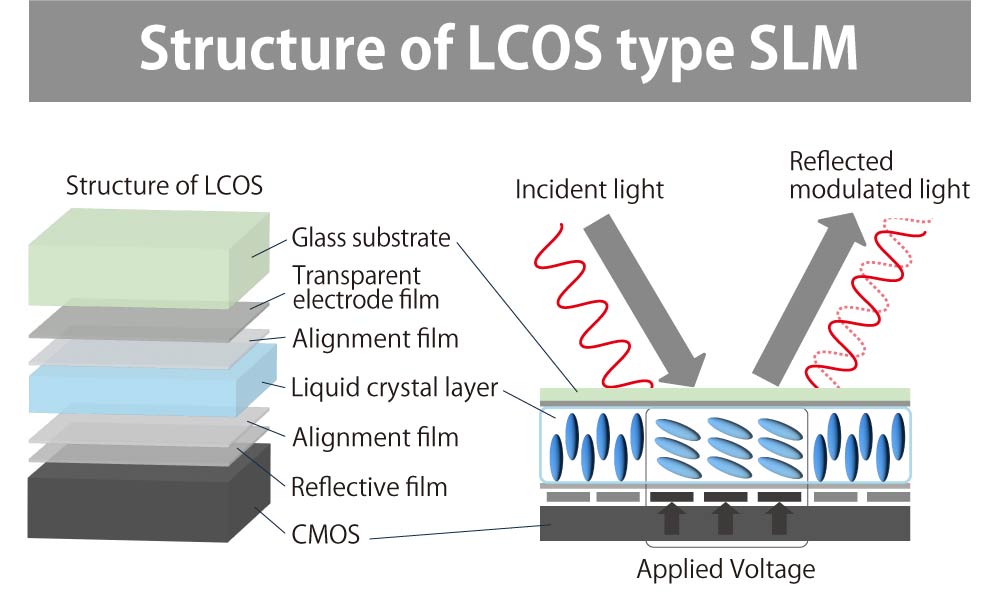
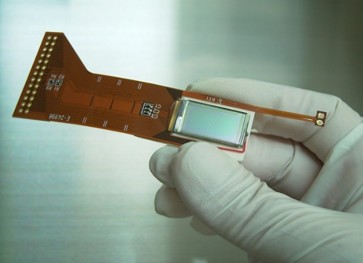
More Blogs
